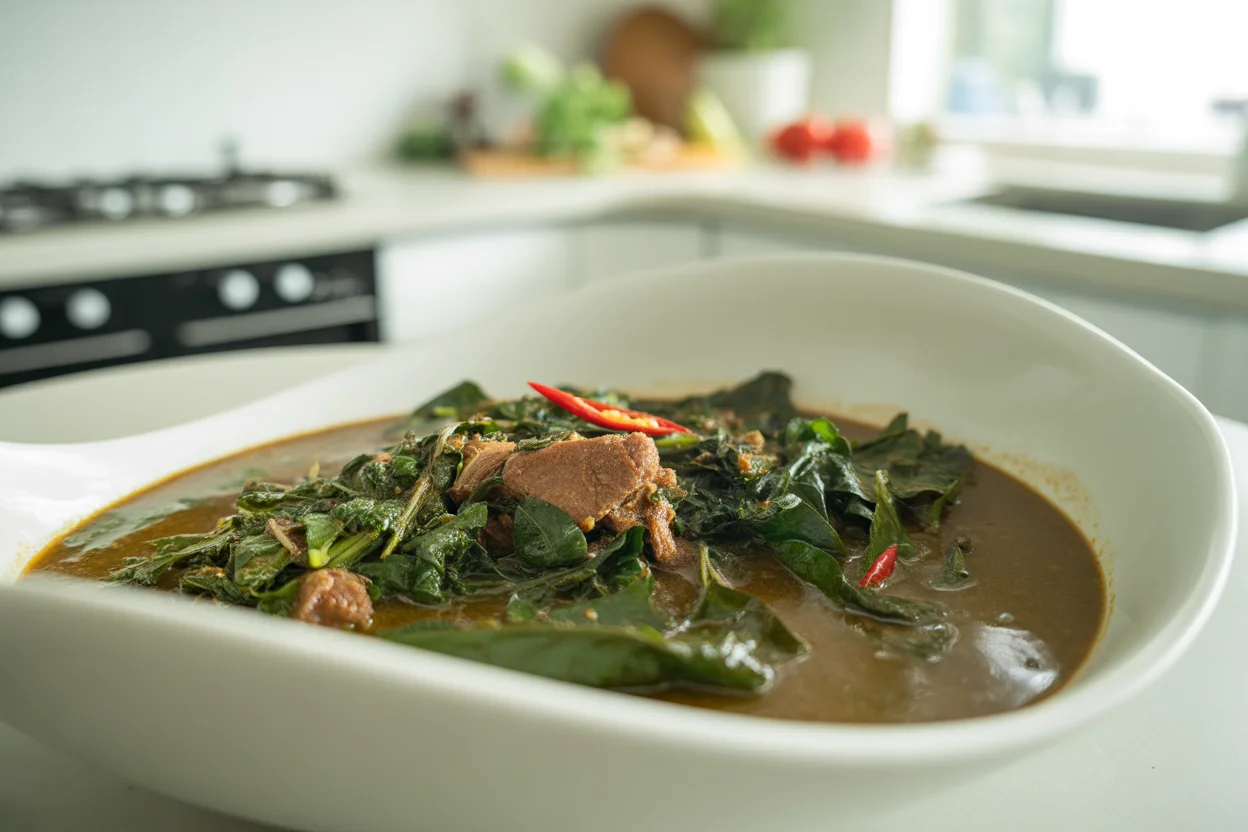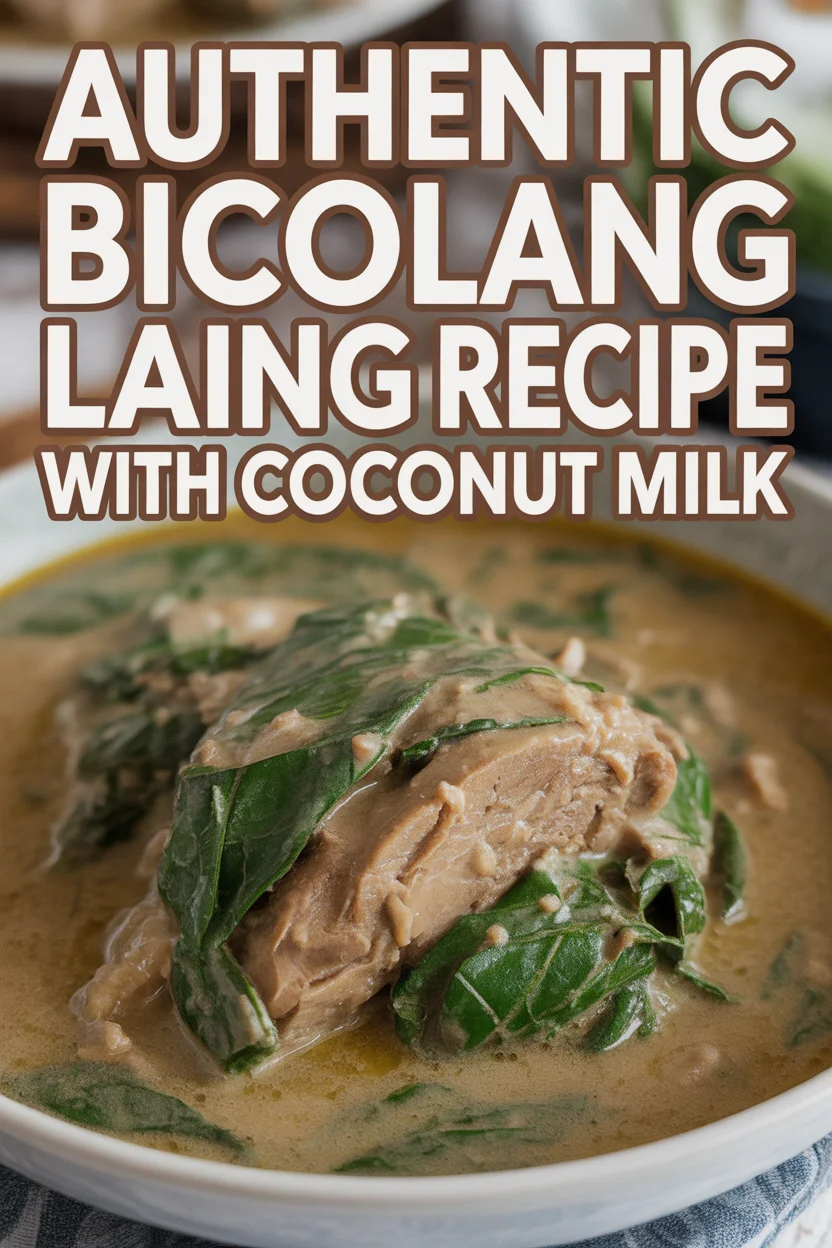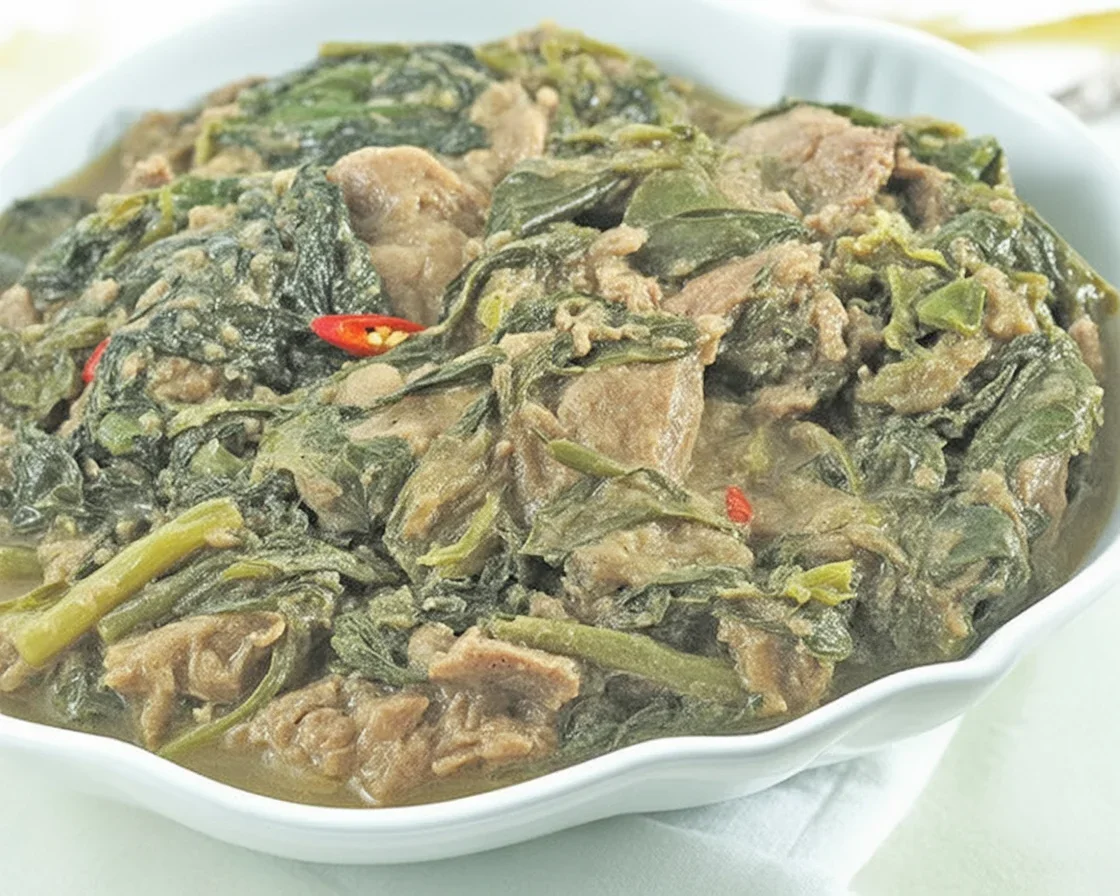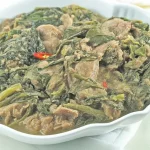You know that moment when you’re hunting for an easy but super flavorful dinner, and it just hits you—Filipino laing recipe! Yeah, it’s the one with creamy coconut milk and earthy taro leaves. I’ve had my share of last-minute “what’s for dinner, again?” panics, and laing always saves the night. Plus, the ingredients aren’t fancy, and you can twist things up if your pantry’s looking sad. Oh, if you like quick things for weeknights, these healthy Filipino recipes and kid-friendly Filipino recipes are worth poking around too. Anyway, let’s dive into laing. 
Introduction to laing
So, let’s talk laing. If you grew up anywhere near Bicol, you already know this dish is a point of pride—everyone’s lola has a “secret.” But here’s the gist. Laing is taro leaves simmered low and slow in coconut milk with a hit of spice. It’s homey, hearty, and almost suspiciously easy to make. You’d think you’d need a culinary diploma to pull this off, but nope. Anyone can, trust me. Just be careful with those taro leaves—raw, they can be a little itchy on the tongue (a lesson I learned the hard way). There’s something magic about how it all comes together in the pot. You start with coconut milk, a bit of your favorite protein (dried fish, pork belly, totally optional), and of course, the taro leaves. Don’t rush—it’s all about the slow simmer. Some days, that smell alone gets the neighbors wandering by. 
Ingredients and preparation
Alright, here’s what you actually need for that authentic Bicolano laing recipe with coconut milk. And yes, I’ve made it with a couple of swaps when I couldn’t get everything, so don’t panic if your grocery store is basic.
Taro leaves (dried if possible, fresh if you’re lucky)
Thick coconut milk (the better, the creamier)
Ginger (slice it up! Don’t skip this, really makes a difference)
Onion and garlic (quantity? The more, the merrier for me)
Chili peppers (labuyo if you like it truly Bicol-level spicy, or mild if you’re chicken)
Shrimp paste or dried fish for salt and umami (optional but classic)
Pork belly, sometimes, because why not?
A splash of oil, some salt, maybe a squeeze of calamansi if you’re feeling extra
Before you ask, yes, prepping those taro leaves is boring—either use kitchen scissors or your hands, but make sure they’re in small pieces and totally dry. Otherwise, trust me, you’ll remember the itch. Pro tip: get everything sliced and ready before the heat goes on. Once the coconut gets boiling, you’ll want to toss things in fast.
“I never thought I could pull off Bicolano laing recipe with coconut milk until I tried this! So creamy, spicy, and truly tastes like something my grandma would make—comfort food level 100.” – Tess, loyal laing eater
Cooking with coconut milk
Now, coconut milk is the true MVP here. If you go for the canned stuff, pick the thickest you can find. And never, ever shake the can—you want that creamy goodness to float to the top. Pour that into your pot first, let it slowly bubble up, and maybe add a touch of water if it’s too thick. Then throw in your ginger, onion, and garlic; let ‘em release their magic. It’s not a race, so keep things on low—burnt coconut smells like heartbreak. When the aroma hits—yup, that’s it—add your protein and chili. At this point, it’ll look like a coconut soup, but patience: the magic kicks in soon. Once everything’s in, no more wild stirring. Leave it be; let the flavors mingle, you know?
Simmering taro leaves
Okay, here’s where things get real. Add those taro leaves. Dried need more soaking in the sauce, while fresh ones need just a quick wilt. Remember—don’t stir yet! Just gently press them down so each bit gets its coconut bath. If you mess with taro leaves too much, you risk bringing out a weird itchiness that’ll haunt you for hours (been there, not fun). Keep the lid off and let the whole thing gently bubble. Over time—sometimes 30 minutes, sometimes almost an hour depending on the leaves—it’ll thicken up. If it looks dry, trickle in a little more coconut milk. The sauce should hug the taro, not drown it. Give it the occasional nudge.
Flavor layering tips
If you want your laing to taste like it came from some five-star Bicol kitchen (or at least your tita’s house), here’s the secret: layer the flavors. Start with those nuts-and-bolts basics—garlic, ginger, onions—before your coconut. Chili should steeps in as soon as you can add it, so the heat spreads. If you’re adding shrimp paste or dried fish, let them get a little time in the pan, right with the other aromatics, before drowning everything in coconut milk. Taste as you go—nobody wants bland laing! A quick squeeze of calamansi at the end? Chefs kiss. Not traditional, maybe, but wow, it brightens up the richness. Now, salt isn’t optional. Don’t be shy, but don’t go wild, either. Laing forgives a lot, but not too much salt.
Presentation ideas
Yes, laing tastes even better than it looks—but why not make it Instagram-worthy? Here’s how I usually serve it, especially when guests are over (or, you know, just myself and Netflix):
- Plate up laing with a mountain of white rice alongside. Classic.
- Toss in some fried dried fish (daing, danggit, or tinapa? So good.) on top for crunch and saltiness.
- Sprinkle crushed chicharron or fresh red chilies for color and bite.
- If you’ve got vegetarians visiting, skip the meat and up the coconut.
Even a basic bowl and spoon works, but if you want to get fancy, banana leaves as a liner? Super Filipino vibe, promise.
Variations and tips
Let’s be real, there are a bunch of ways to riff on this authentic Bicolano laing recipe with coconut milk. Substitute dried fish with tofu or mushrooms if you’re skipping meat for the day. Sometimes I throw in a bit of malunggay or spinach—totally not traditional, yet nobody complained. Got leftover laing? Mix with noodles for a weird but addictive fusion, or use it as a filling in wraps. Oh, and don’t forget the heat level—adjust those chilies to your soul, not the recipe’s rules. If you’re curious about modern or fuss-free tweaks, check out this creamy coconut taro leaves laing that’s been a weeknight hit in our house. Plus, if you’re into breakfast, laing goes super well with garlicky rice like Filipino garlic fried rice. Experiment all you want—nobody’s going to police your kitchen.
Common Questions
Can I use spinach instead of taro leaves?
Honestly, yes, if you can’t find taro. Spinach wilts fast so just simmer for a short bit, but taste won’t be exactly the same.
Is canned coconut milk really okay?
Absolutely! Just try to get one that’s thick and not watery. Some brands just… nah, you’ll notice.
Does laing keep well?
Heck yes. Tastes even better the next day—just store it in a tight container in the fridge. Reheat with extra coconut milk if it dries out.
Is it always spicy?
Nope. You can make it as mild or fiery as you want. Bicolanos like the heat though, so they’ll probably tease you if you go mild!
What’s the easiest protein to add?
Dried fish for classic flavor, pork belly for richness, or just go vegetarian if you want something lighter. Your call.

So, next time you’re craving top-tier Filipino comfort food, don’t hesitate—this authentic Bicolano laing recipe with coconut milk brings Bicol to your kitchen, minus the plane ticket. Want another expert take? Check out Panlasang Pinoy Laing Recipe – Panlasang Pinoy for their version. Or see the classic breakdown at Authentic Laing Recipe (Taro leaves in Coconut Milk) – Foxy Folksy. Try it and let me know how your laing journey turns out—bonus points if everyone begs for seconds!
Laing
Ingredients
Main Ingredients
- 2 cups taro leaves Dried if possible, fresh if necessary.
- 2 cups coconut milk Use thick coconut milk.
- 1 tablespoon ginger Sliced.
- 1 large onion Chopped.
- 4 cloves garlic Minced.
- 2 pieces chili peppers Labuyo for spiciness; adjust to taste.
- 2 tablespoons shrimp paste or dried fish Optional for added flavor.
- 200 grams pork belly Optional.
- 1 tablespoon oil For sautéing.
- to taste salt To season.
- 1 tablespoon calamansi Optional for a citrusy finish.
Instructions
Preparation
- Slice the taro leaves into small pieces and ensure they are completely dry.
- Chop the onion and garlic, and slice the ginger.
Cooking
- In a pot, pour the thick coconut milk and let it slowly bubble over low heat.
- Add the ginger, onion, and garlic. Cook until fragrant.
- Add the protein (if using) and chili peppers. Stir minimally and let it simmer.
- Gently press the taro leaves into the pot without stirring, and let them soak in the sauce.
- Cover and let simmer for about 30-60 minutes until it thickens. Add more coconut milk if it looks too dry.
- Taste and adjust seasoning with salt and calamansi, if using.

